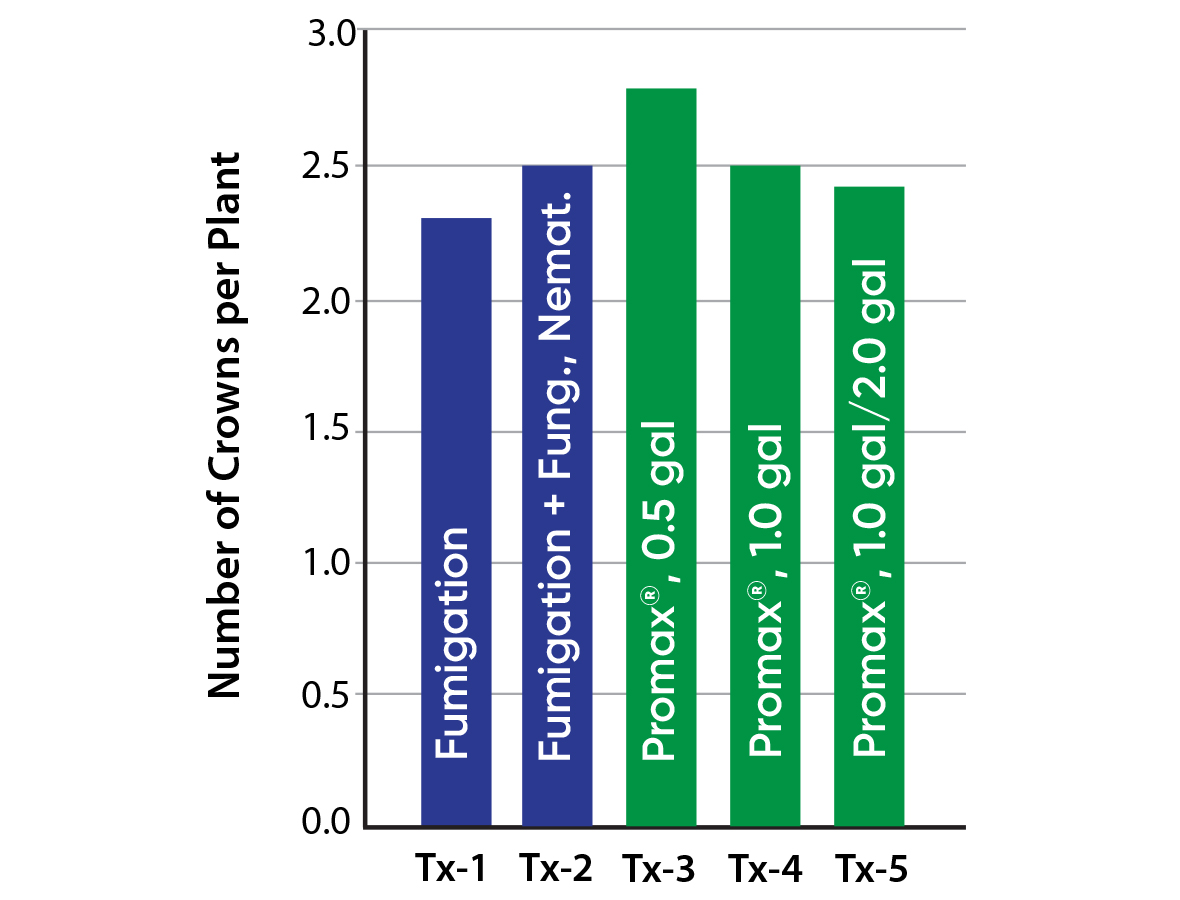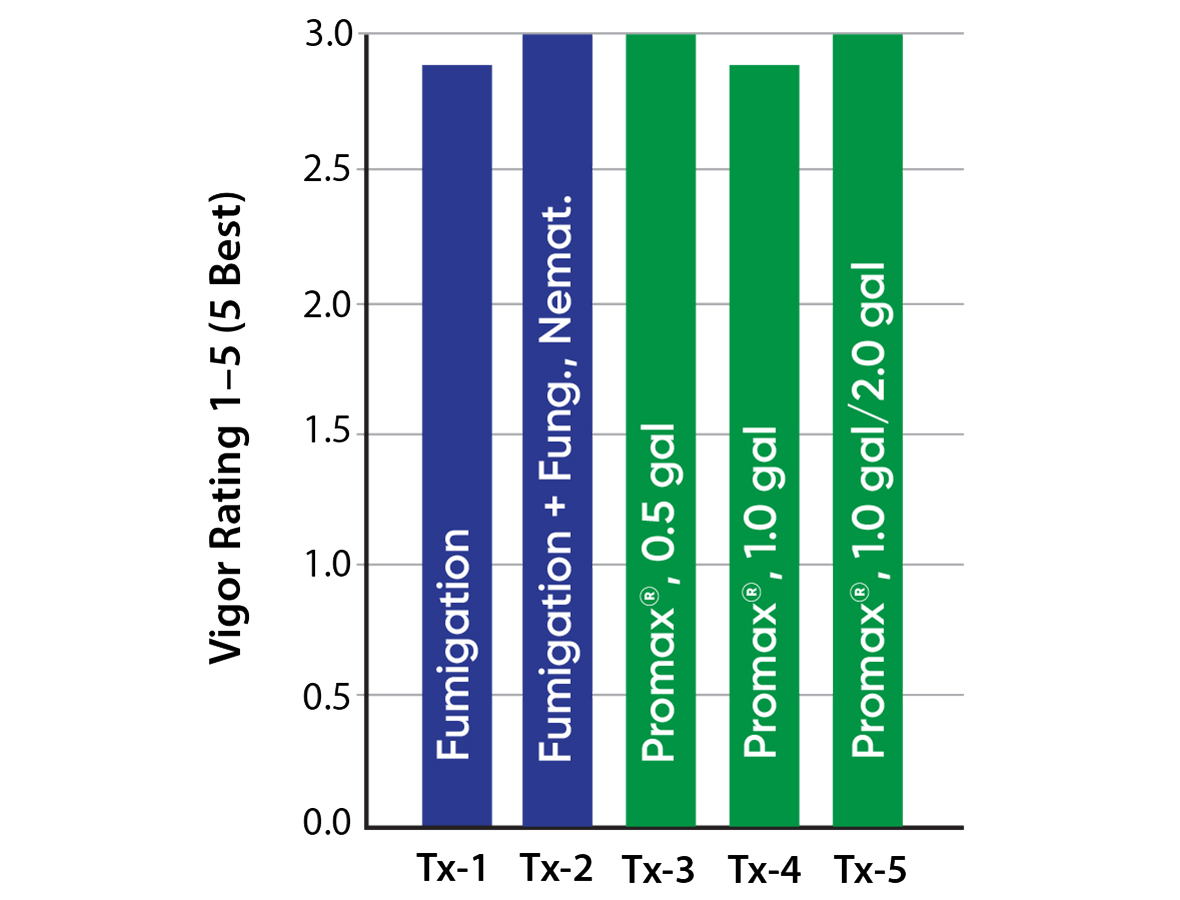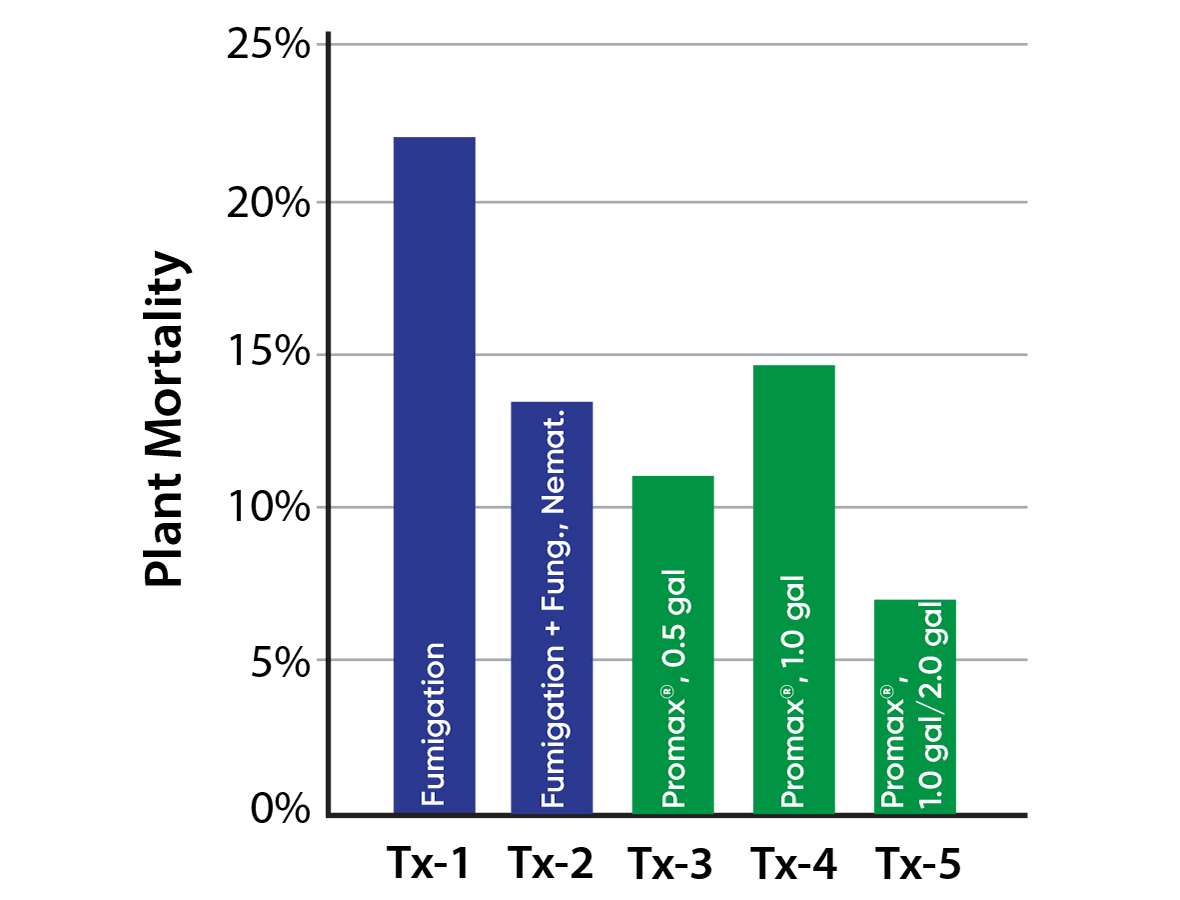Introduction
A field trial to test efficacy of Huma® Promax® as a cropprotection product for strawberries (Fragaria sp.) was applied in a location known to have spring disease problems with either Fusarium or Macrophomina pathogenic fungi.
This report is based on a field trial with strawberries conducted by Holden Agricultural Research and Consulting submitted on June 23, 2013, to Huma, Inc. This document is a condensed overview of the trial. A full report with additional information, charts, and photographs is available.
Materials & Methods
The block of San Andreas (University of California variety) strawberries used for this trial was approximately 20 acres in size. This trial was set up as a demonstration replicated strip trial of five treatments with completely randomized data collection of four replicates maintained during the growing season.
The generalized treatment regimes were:
- Grower standard pre-plant fumigation (Untreated Check)
2. Grower standard plus regular applications of the fungicides Ridomil® (Syngenta Crop Protection) or FungiPhite® (Verdesian Life Sciences) and the nematicide MeloCon® (Certis)
3. Promax® at 1/2 gal/acre/month
4. Promax® at 1 gal/acre/month
5. Promax® at 1 gal/acre/month followed by two late season applications at 2 gal/acre/month
Though a grower standard pre-plant fumigation program was performed in Treatment 1, in this report it will be considered the untreated check (UTC) since it received no post-plant soil fungicides, and Treatment 2 will be referenced as the grower standard. All materials were applied in-season through the grower's in-bed low-volume drip irrigation system. Plants were also visually analyzed for any adverse treatment effects. Treatments were replicated four times, alternating along the length of a strawberry bed. Each replicate plot comprises a single two-plant row bed, measuring 48 inches from center to center. Each replicate plot was 20 feet long. The first application commenced in mid-April, and the applications continued approximately every 14 days throughout the season for a total of 8 applications.
Results
The differences among the 5 treatments were not statistically significant for strawberry crown development and plant vigor. (See figures 1 and 2.), although the Promax® Treatment 3 (0.5 gal) did show a numerical superiority to the other treatments for crown development.
Figure 3 represents mortality due to disease development over time. The presence of the disease Macrophomina phaseolina (Strawberry Charcoal Rot) was confirmed in samples. The Promax® treatments showed the same statistical effect on mortality as the grower standard program, but it is interesting to note that Treatment 5, in which the Promax® application rates were doubled to 2 gal/acre/month showed approximately half the mortality when compared with the other treatment programs (7.3% compared to an average of 13.1% for the average of the other three programs combined).

Fig. 1. Average Crown Development on 2/28/2013

Fig. 2. Average Plant Vigor
on 2/28/2013

Fig. 3. Percentage Plant Mortality on 5/10/2013
Conclusions
Promax® applied to strawberries through an in-bed low-volume drip irrigation system is just as effective as the combination of standard fumigation + fungicides/ nematicides when it comes to improving crown development and plant vigor, and it shows an advantage when reducing plant mortality. Because Promax® is an OMRI-Listed product with none of the restrictions that come with fumigation use, it is also much easier to apply.

